Raicilleros, Philosopher Kings (Part 2)
If the birds are singing, the raicilla will follow.
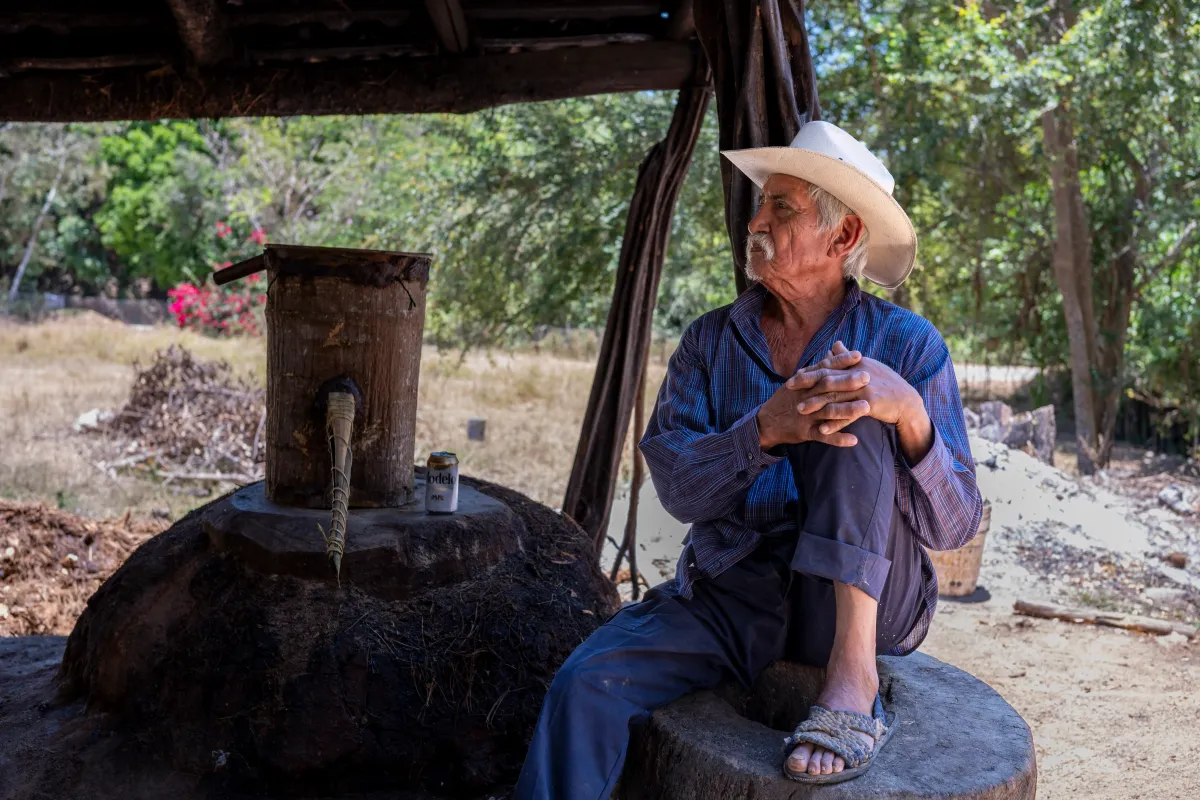
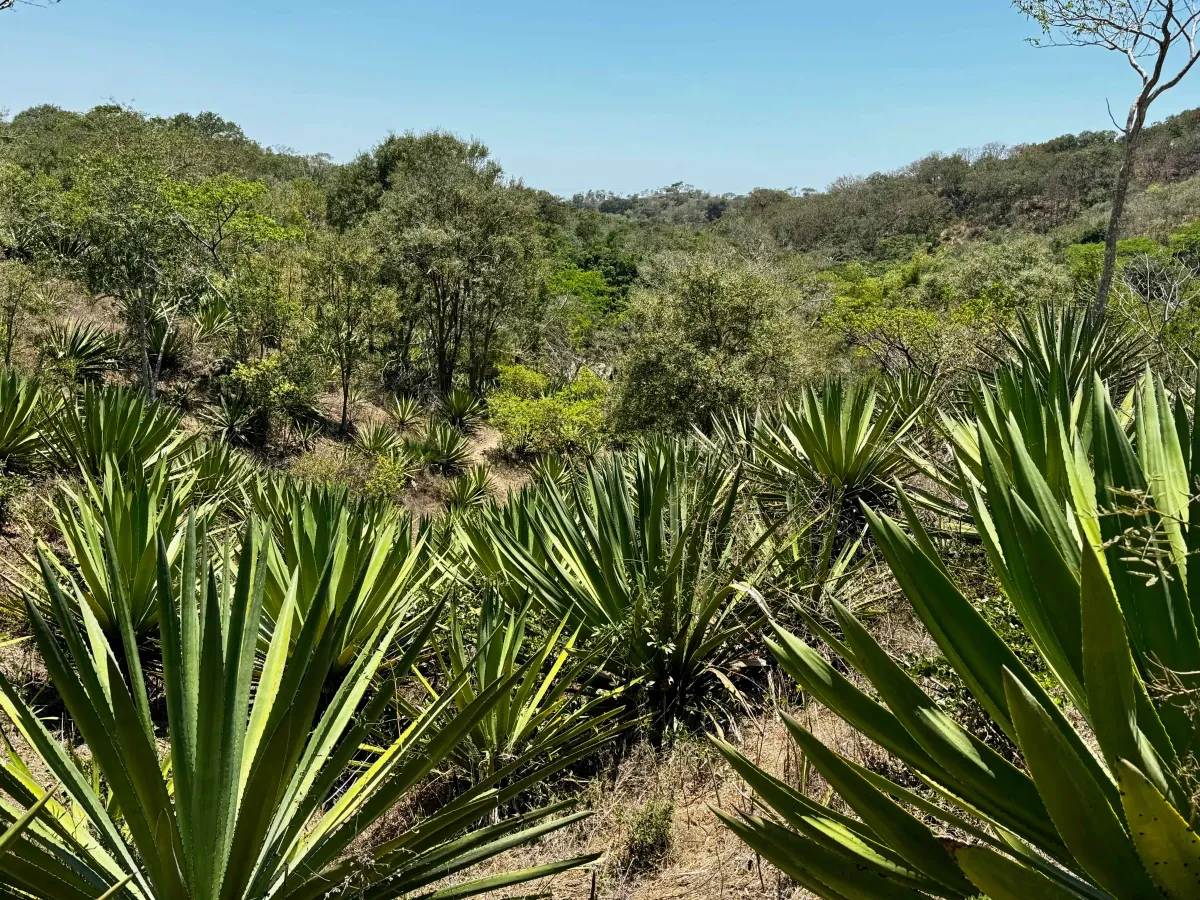
“Destruction follows money,” Adrián postured while sipping his Modelo. But up in the mountains of Cabo Corrientes, amidst a copse of pines and agaves, there were no apparent signs of destruction.
Arturo and I were visiting Adrián, one of Jalisco's oldest and most respected raicilleros. We were at his taberna, chatting about the past, present, and future of raicilla. Adrián is part of the old guard who knew mezcal before the industry boom, which means when he speaks, we should listen.
To most passersby, a taberna wouldn't look like much at all—a makeshift wood structure with corrugated metal roofing, a couple of old hammocks, and some hollowed-out tree trunks. But its clandestine nature speaks to its complicated history and relationship with authority.
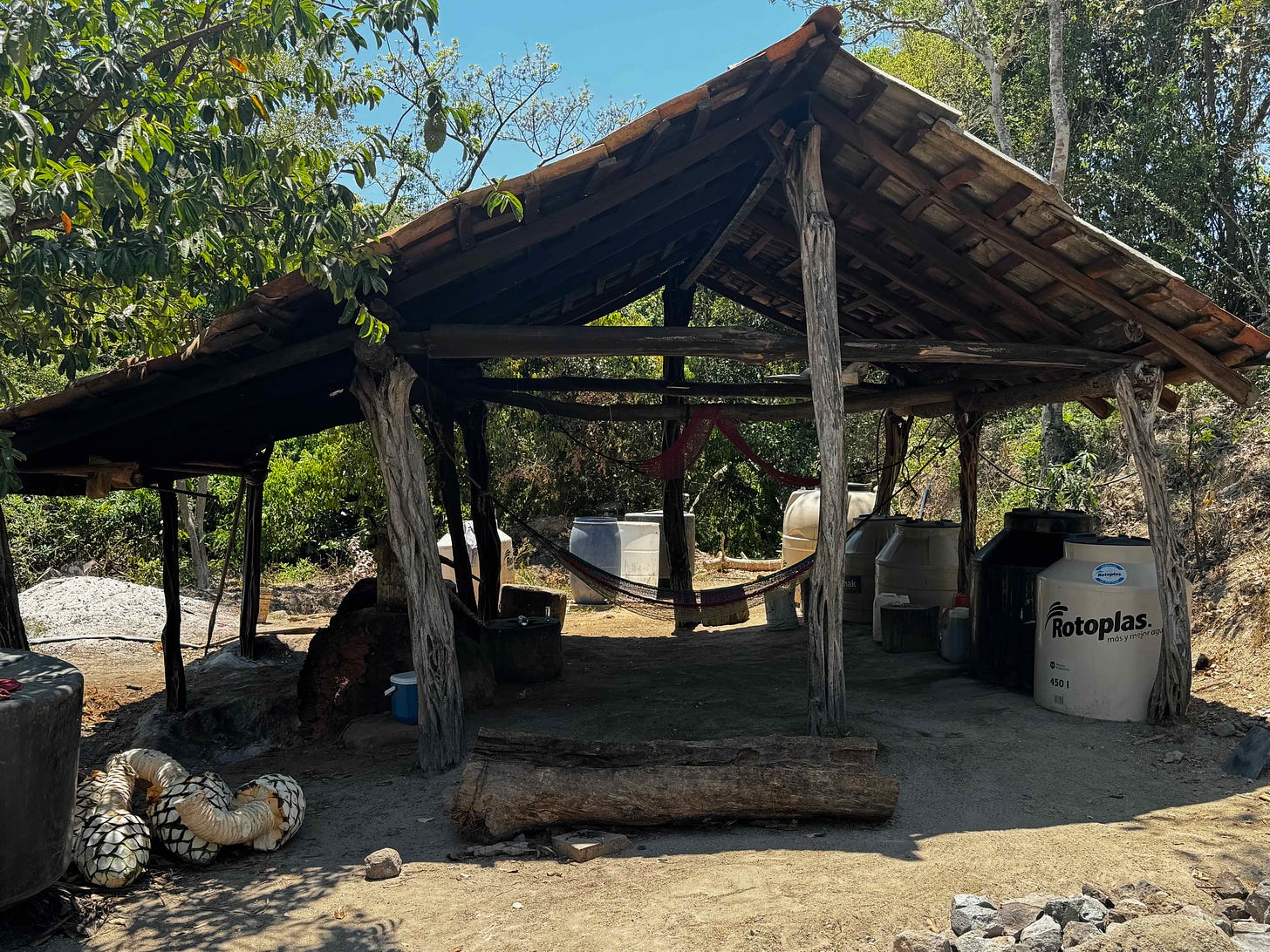
When we arrived, Adrián greeted us quietly. He’s a pensive man, one of few words. Within seconds of our meeting, he spotted a lizard on the roof of his taberna. He briefly considered it, then told us how this type of lizard helps manage some of the pests here, including scorpions. After another moment, he turned around and gestured toward some seats. It was time to talk.
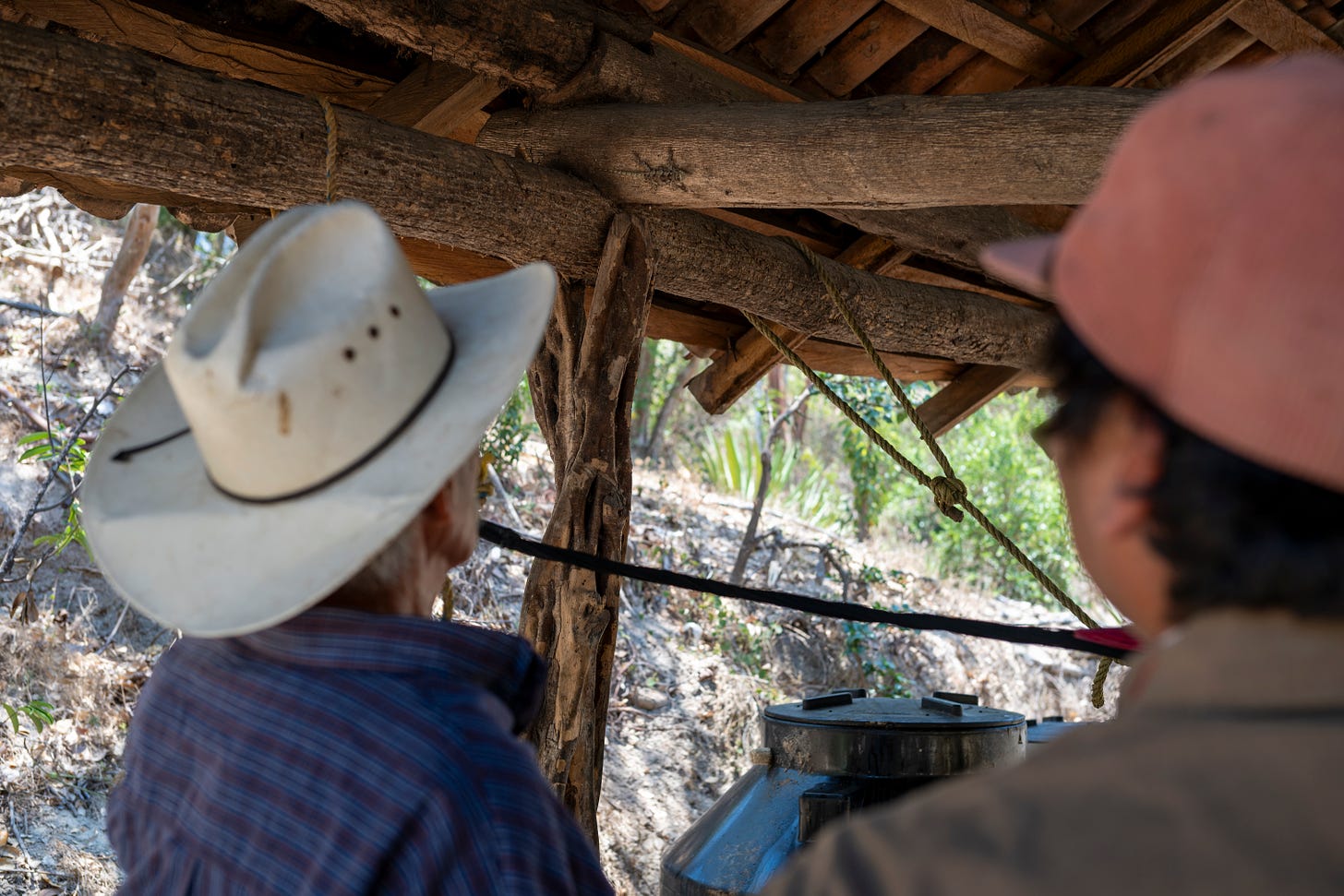
For the better part of 80 years, Adrián has been growing agaves and making raicilla in Jalisco. In his youth, he traveled the region, worked for other makers, and learned the trade. During his travels, he noted the different types of agaves and their personalities—amarillos had a slight yellow tint, amargocitos were a little bitter, and the duros were hard to work with. These names were passed down from maker to maker.
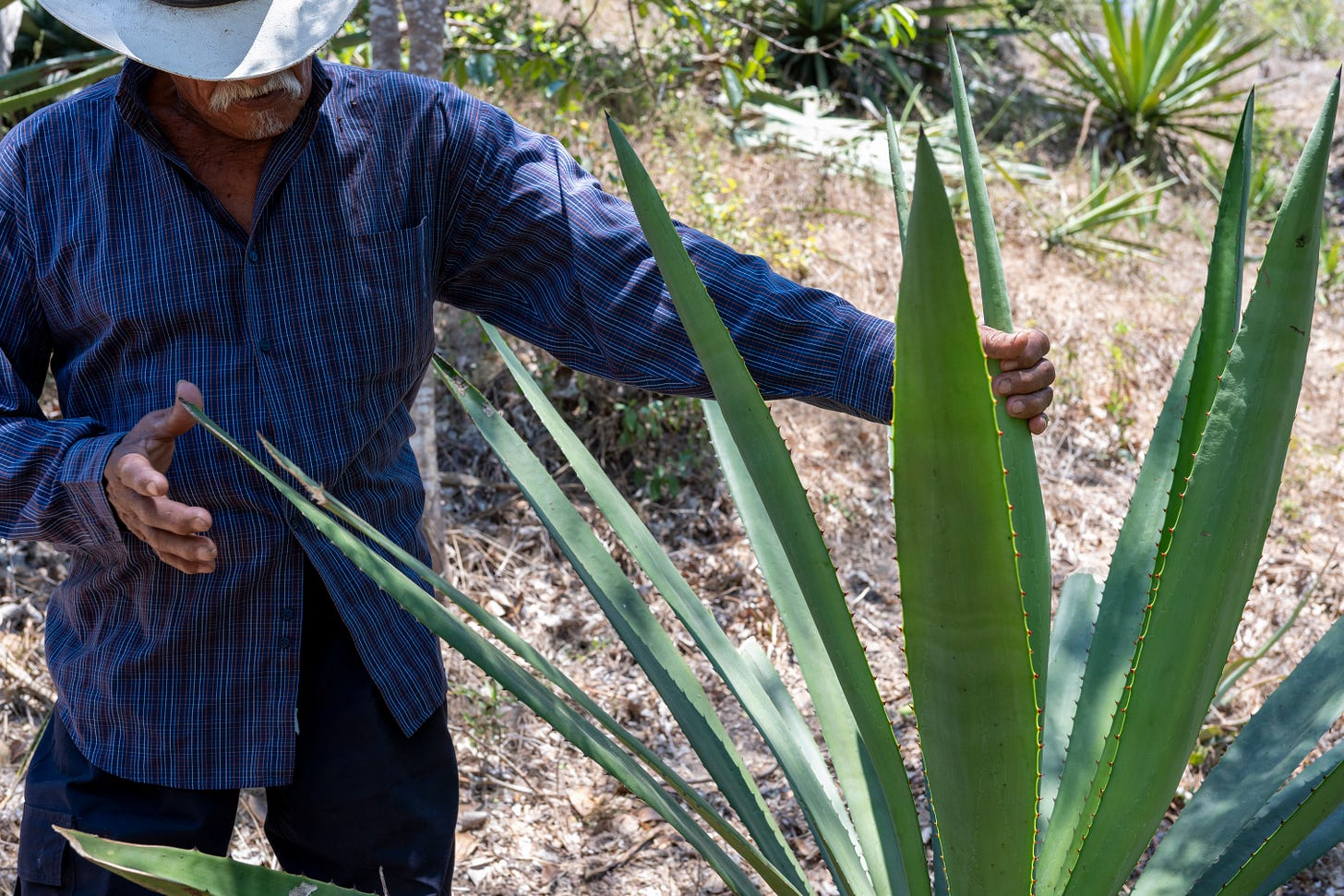
He also learned how the environment shaped the plants. For example, if you grew too many of the same agave varietal, they'd be susceptible to disease. Or if you used chemicals on the soil, you'd kill off all the bugs. Without the bugs, there wouldn't be as many birds or bats pollinating the agaves.
Those early days were formative and allowed him to develop his perspective. So when he inherited land from his uncle and started making his raicilla, his first thought was about the birds—"We'll figure out how to make mezcal, but first, we need birds," Adrián recalls thinking. To him, birdsong is a measure of the health of the land. If the birds are singing, the raicilla will follow.
The taberna is also where you start to see the history of Jalisco. The still used here is adapted from the one used to make lambanog, a Filipino coconut palm liquor. It's a rudimentary still comprised of a hollowed-out tree trunk between two copper bowls. But it's small, compact, and easy to disassemble - features that kept it relatively hidden from authorities and allowed it to spread throughout Mexico in the 17th century when mezcal production was prohibited.
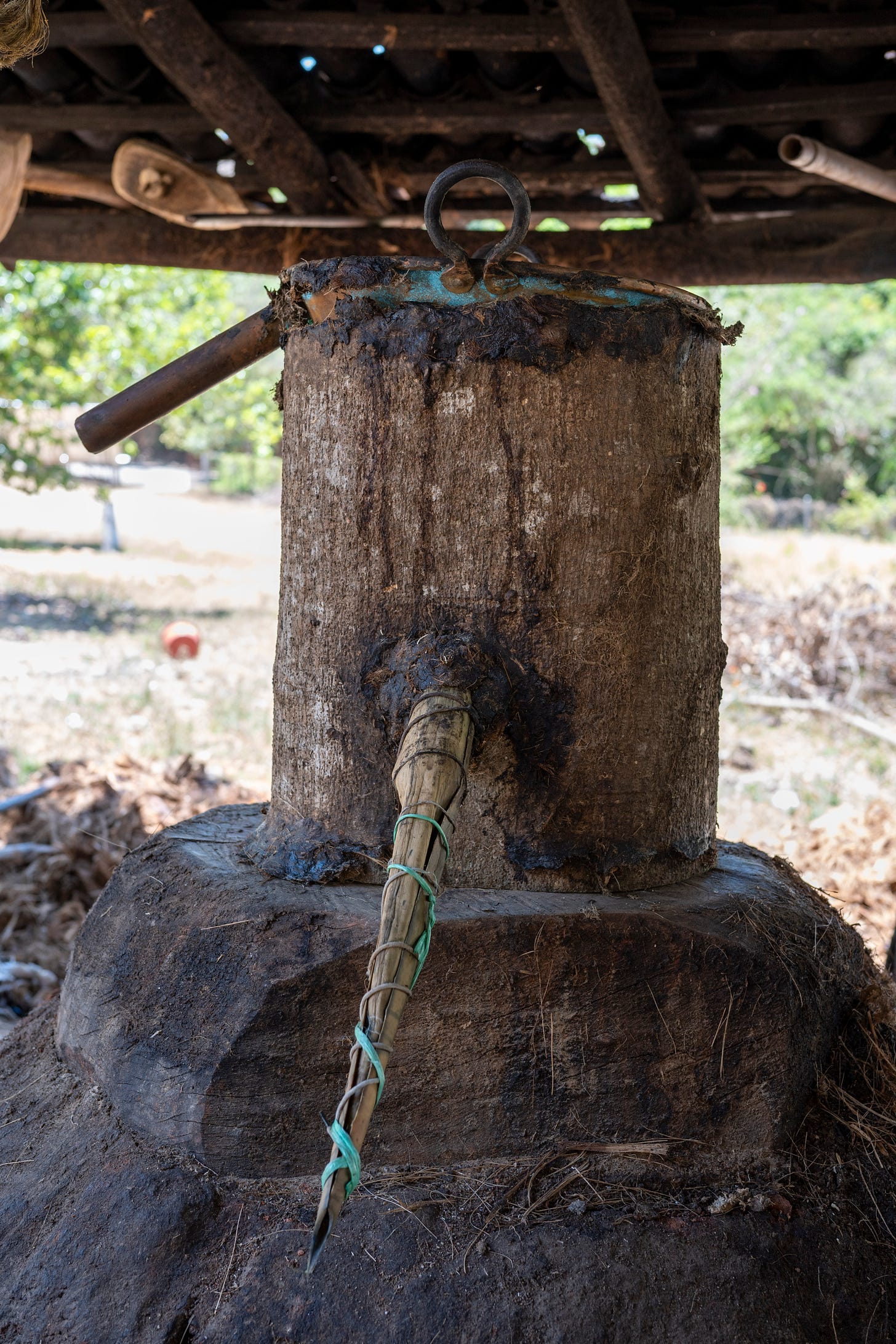
As I was taking pictures, Adrián walked over to one of the vats behind me and opened it up, gesturing me to smell and look. Inside were the fibers and juices of the roasted and smashed agaves, left to ferment for a week until it's ready to distill. The raicilleros call it tuba, another relic of Filipino influence borrowed from the similarly named drink made from fermented coconut sap.[1] He picked up a small cup and poured a little in for me to try—sweet and acidic with rough tannins but still plenty drinkable.
Then we started to walk his property, and as Adrián walked among his eden, you could see him observing. He'd point out the agaves, mostly duros, a few amarillos, and a handful of chico aguiars along the way. A few are almost mature. Others need more time. And some piñas have already been harvested and are ready for roasting. All told, Adrián has at least 32 different species of agaves on his land. [2]
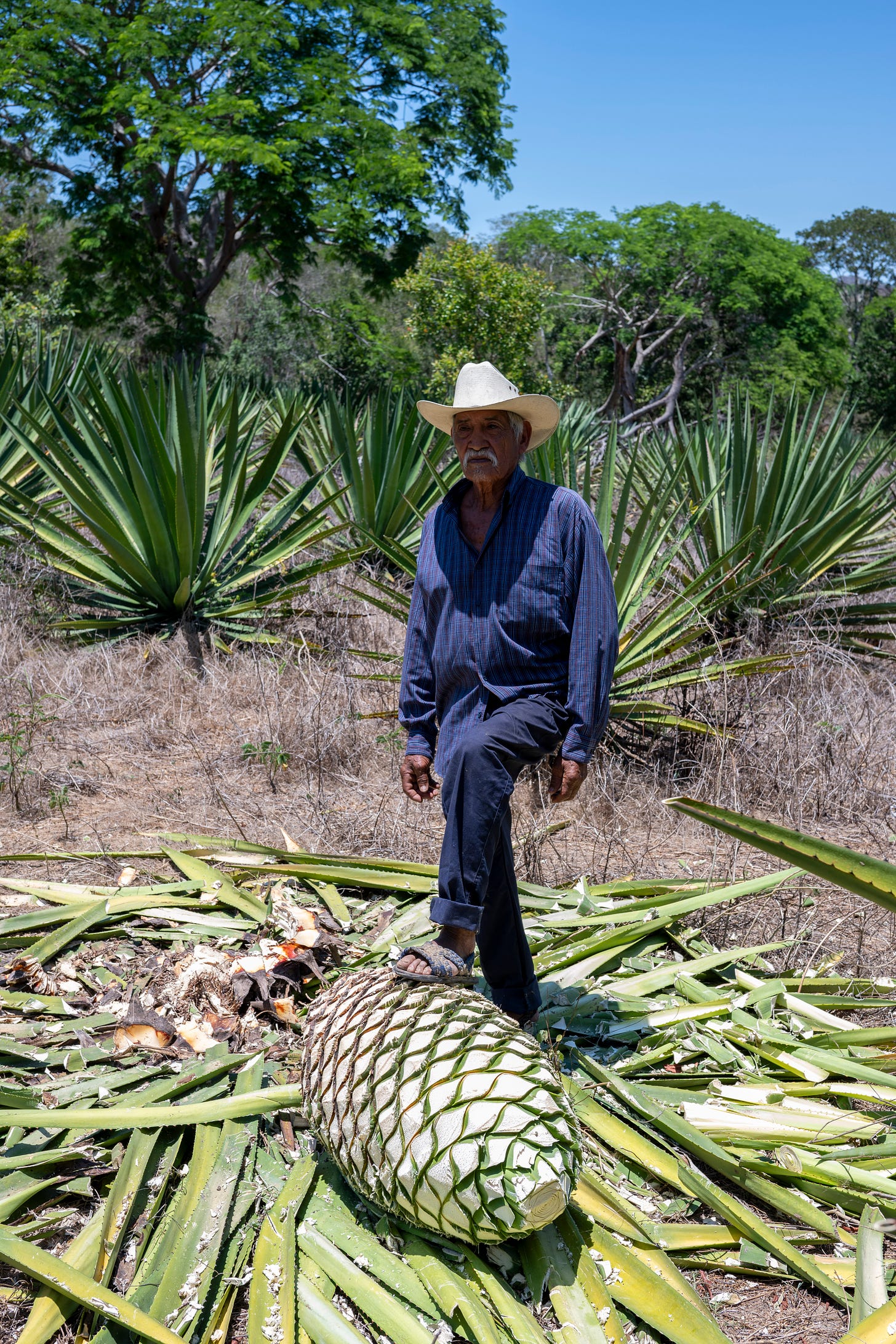
He also takes stock of some agaves that don't look healthy. He's worried about a new disease or bug going around that seems to be attracted to the amarillos. The occasional fungus and plant disease is common in Cabo Corrientes because of the heat and humidity, but Adrián said it's been hotter than usual this year.
We kept walking and kept observing. The agaves themselves are beautiful, triumphant plants.
Though my walk through the agaves was peaceful and pastoral, it was also clear that this is hard fucking work.
The agaves first have to grow to maturity, which can take 10 to 30 years. [3] Once matured, the agave's heart, or piña, is harvested. Those piñas are thrown in a big earthen pit and roasted for a few days. Once cooked, the agaves are mashed with wooden mallets to collect sugary juices. Those liquids and some fibers are put in a giant vat to ferment for a few days. Finally, once fermented to the raicillero's taste, the liquid is distilled. [4]
It's as much a science as it is an art. At every step, the natural environment and the raicilleros leave their mark. The type of wood and rocks used to roast the piña impart a flavor. The wood used to make the still varies by region. The yeast in the air and on the agaves affect the fermentation. The length the tuba is left to ferment is subjective. The raicilleros understand and use all these variables to coax the raicilla into existence.
It's a hard job, and Adrián still does it all himself. Meanwhile, I walked less than a mile with my camera in this 90-degree weather, and I was begging for mercy.
Make no mistake, these raicilleros are tough as hell.
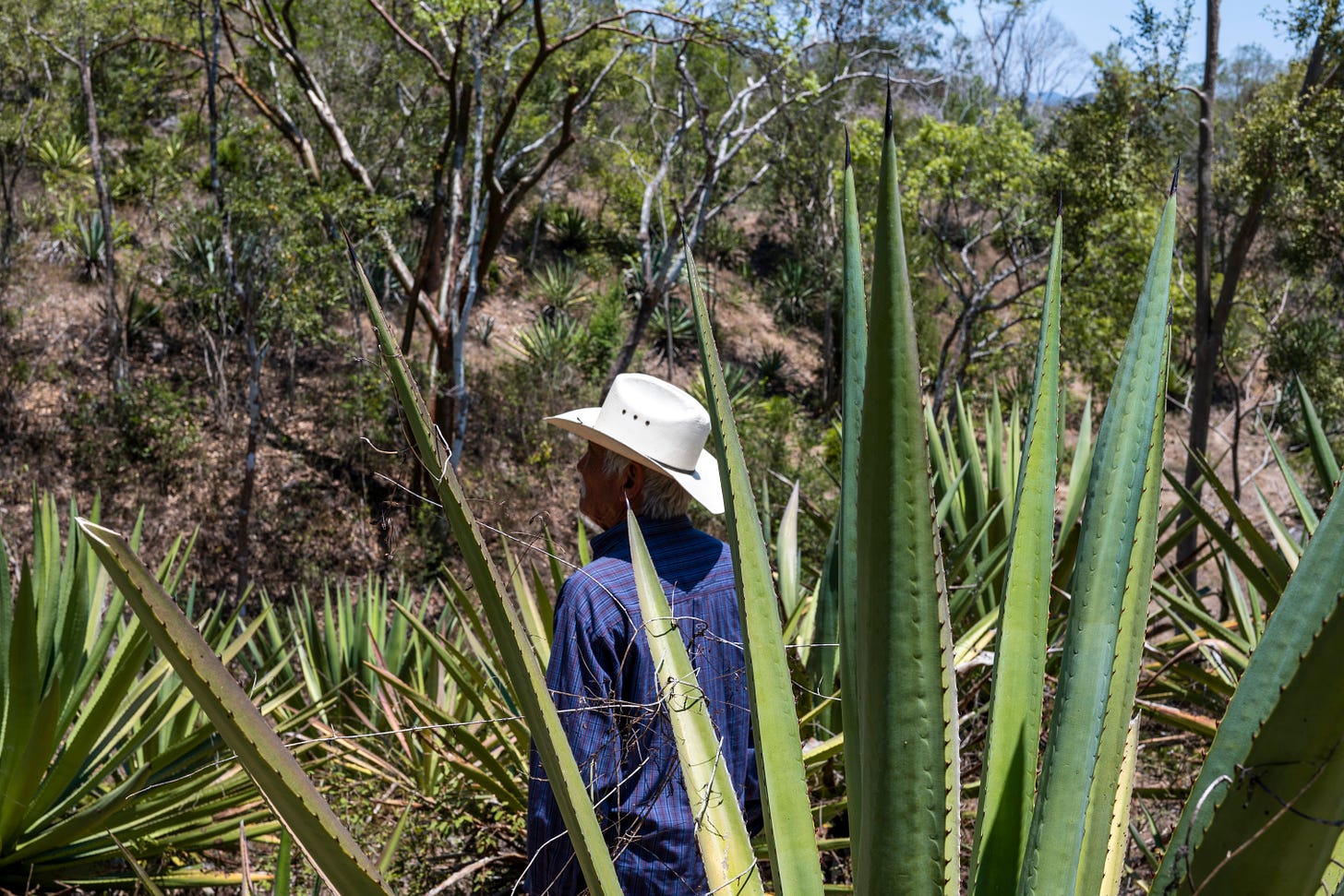
We had just finished walking through his property and were having a small snack under his palapa - sliced cucumbers, carrots, a little lime juice, and a dusting of sea salt. As some trucks drive by on the nearby dirt road, the conversation quickly turns towards a new development not too far away. Xala, a billion-dollar luxury resort, is under construction and will open in the next couple of years.
Arturo and Adrián are apprehensive. Such a big resort means more attention and strain on the area, which will have rippling effects on the nearby Cabo Corrientes. Of course, tourism pressures have been a constant in Vallarta for some time now, but lately, it's felt bigger, faster, and deeper into rural areas.
How will this impact raicilla? More development means less land and degradation of the environment where coastal agaves can grow. At the same time, more tourism will likely lead to more demand and pressure to increase production.
Traditionally, raicilleros weren't just making raicilla; they were also farmers. They grew fruits and vegetables and raised livestock. But as the demand for raicilla increases, the natural tendency is to ditch the other crops and focus on the easiest and fastest agaves to grow - look at tequila and mezcal. The old guard, like Adrián, knows the agaves don't grow in a vacuum; if you forgo the other components, the system suffers. But as the younger generation takes over, that wisdom is getting lost.
And, of course, there's money. Raicilla, and all mezcal, has been the drink of poor farmers and miners for the past three hundred years. The raicilleros might be rich in many resources, though money is not one of them. But now there’s value to be captured. So, as the market comes knocking with a big pile of cash, who can blame them?
Despite all of that, Adrián is still optimistic. He was able to build a life around raicilla, so maybe others can, too. The road ahead will be hard, and there will be friction, but there’s reason to be hopeful.
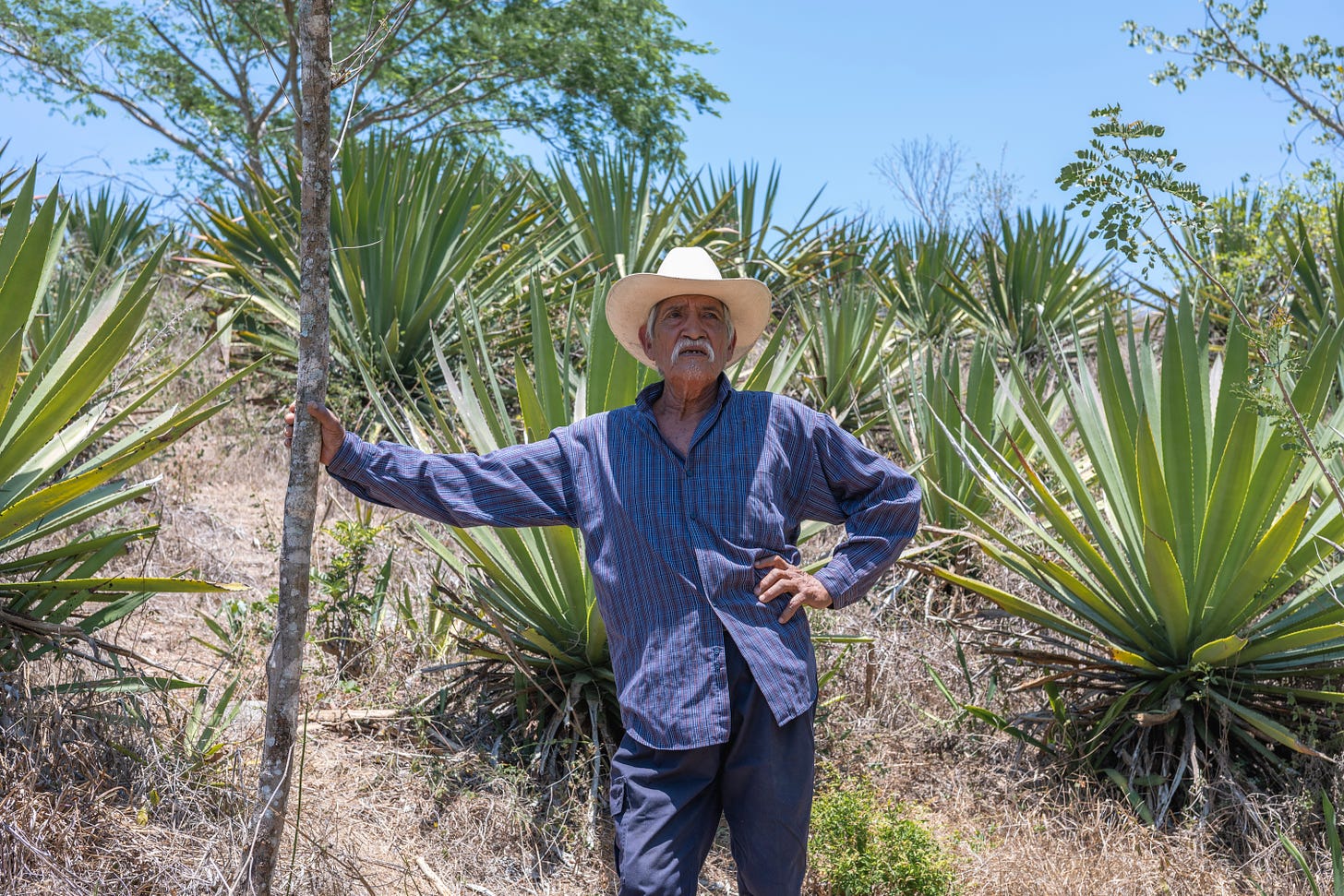
Footnotes
[1] You can still find the fermented coconut sap version of tuba all around Jalisco and Colima. It’s a great nonalcoholic, slightly sweet, and refreshing drink on a hot day.
[2] Many of the varieties he has on his land are wild agaves and are constantly mixing and cross-pollinating with each other to create sub-categories of agaves.
[3] The time it takes for the agaves to grow depends on the varietal.
[4] This is the general process for raicilla that’s made on the coast in Cabo Corrientes (raicilla de la costa), bu the production process can vary by region.

